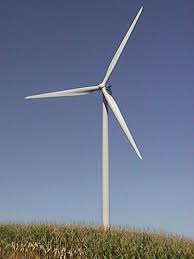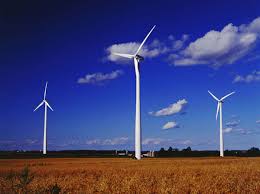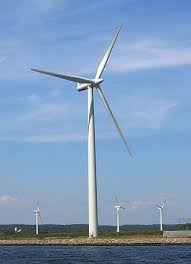Use Wind Power at Home
The wind, just like solar energy and other renewable sources of energy is clean and if used efficiently, can generate immense amounts of power and also save a lot of energy. Let's take a look at how you can generate wind power at home by using mini wind mills or mini wind turbines. Especially if you live in a very windy area, it is very probable that you can easily produce wind power at home and save a lot of money.

Wind turbines or wind mills vary greatly in size. Some of the larger wind turbines can generate hundreds of megawatts (MW) of electricity which is enough to power thousands of people's energy needs. Smaller wind turbines produce electricity somewhere in the range of a couple of hundred kW and are the perfect ones to be installed in residential areas. So if you are looking to "produce wind power home" , then the smaller wind turbines are something you should definitely consider.
If you are considering installing a wind power system at home, then compare the place you live in with this checklist:
- Is your house in an area where there are sufficient winds?
- Is there enough space for setting up wind turbines?
- Check with your city's laws to see if you have permission to set up these wind turbines.
- Are your electricity bills very high?

If everything in the above checklist is satisfied, then it means that you can definitely set up wind power systems at home. Also, to keep in mind is that this is a long term investment and you may need to spend quite a bit of money initially. But, you can be assured that in a few years or even months, if you use do it yourself guides, you will make up for what you spent initially on buying these wind power at home systems.
Is the wind you are getting enough?
This is an important question to consider as you would have to have a steady amount of wind blowing at the wind mills to actually generate useful energy. Average annual wind speeds of around 4 – 5 m/s are needed for a small wind turbine to generate enough electricity to recover your initial investments.
You can check at your local weather station to see if your area actually receives the kind of wind speeds that are actually required. Also, the freer the area you are planning to install the wind turbines is, the better since you do not want obstructions such as neighbouring houses or trees.

Ideal locations would be the prairies which is flat and is deal for the wind power home systems to be set up on the ground. If you are unsure of whether the place where you stay is good for generating electricity from wind energy or not, you should definitely use wind power evaluation systems. These are also called as anemometer and they could definitely prove to be extremely useful for you to find out if your property is right or not for wind energy.
Irrespective of whether you use wind resource evaluation systems or not, you should definitely check out whether or not your house and property gets the right amount of wind energy area or not. It also helps a lot if you have an approximation of how much wind speeds you actually receive. Keep in mind that your wind turbines are probably going to be installed on top of a tower and that it is most useful if you can get an approximate idea of how much wind speeds you receive up there.
Some things to keep in mind:
- Consult your neighbours to see that they have no problems with you setting up these wind turbines in your house.
- Set it up at an area that is totally free of obstructions such as trees and buildings. Preferably at locations with wide empty space.
- Your government's laws about setting up these wind turbines.
How the wind turbines function?
The two types of wind turbines, horizontal axis and vertical axis turbines both function differently. Vertical axis turbines function in whichever place the wind is blowing. But horizontal axis turbines get pointed to the direction of the wind with the help of tail vanes.
Components Used:
- The blades with surfaces that are aerodynamically designed.
- An adjustor to make sure that the speeds of the generator and the blades are made to be equal.
- Tail vanes, which I mentioned earlier, to orient the wind turbines in the direction in which the wind is blowing.
Specifications for Wind towers:
Towers need to be a minimum of about 80 – 100 feet high. This is necessary to make sure that an optimum amount of wind is used to rotate the blades. If it is not of this size, enough power will not be generated. Furthermore, you need to ground the tower to protect it from lightning.
Also, the power generated is in DC current mode. The various appliances in your house use AC current and so, you need an inverter to convert the electricity. This is in short, how you can build a wind turbine and use it to generate electricity. However, you must also keep in mind the other charges that are involved in setting up wind power home solar systems, such as taxes and payment for labour etc. So make sure that you make a sound decision on whether or not to set up wind power home turbines or not.
Although you can definitely set up wind turbines on rooftops, it is not totally safe since the vibrations can cause structural damage within the building. Also, safety concerns that need to be noted are things such as maximum wind speeds. There is something called "survival speeds" which is the maximum speed that the turbines can rotate at. But do not worry as internal mechanisms make sure that it does not rotate above these speeds. But just make sure that your "wind power home" systems have this feature installed in them.
To a greener future,
Andy.
No comments:
Post a Comment